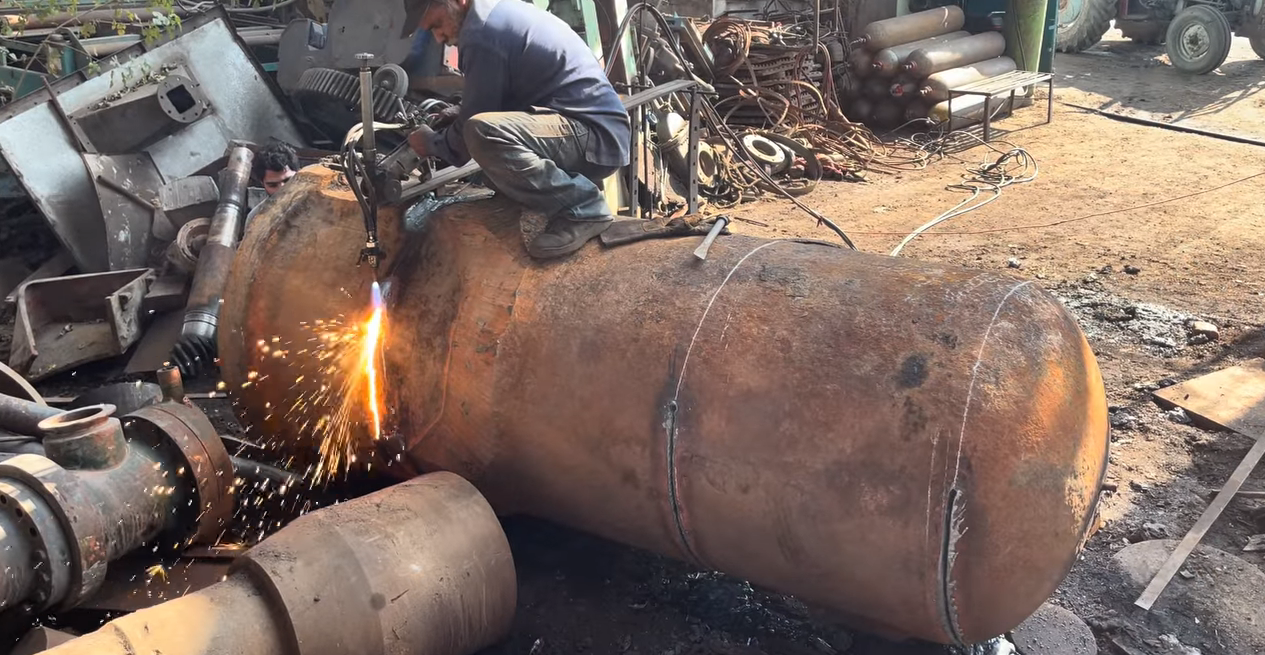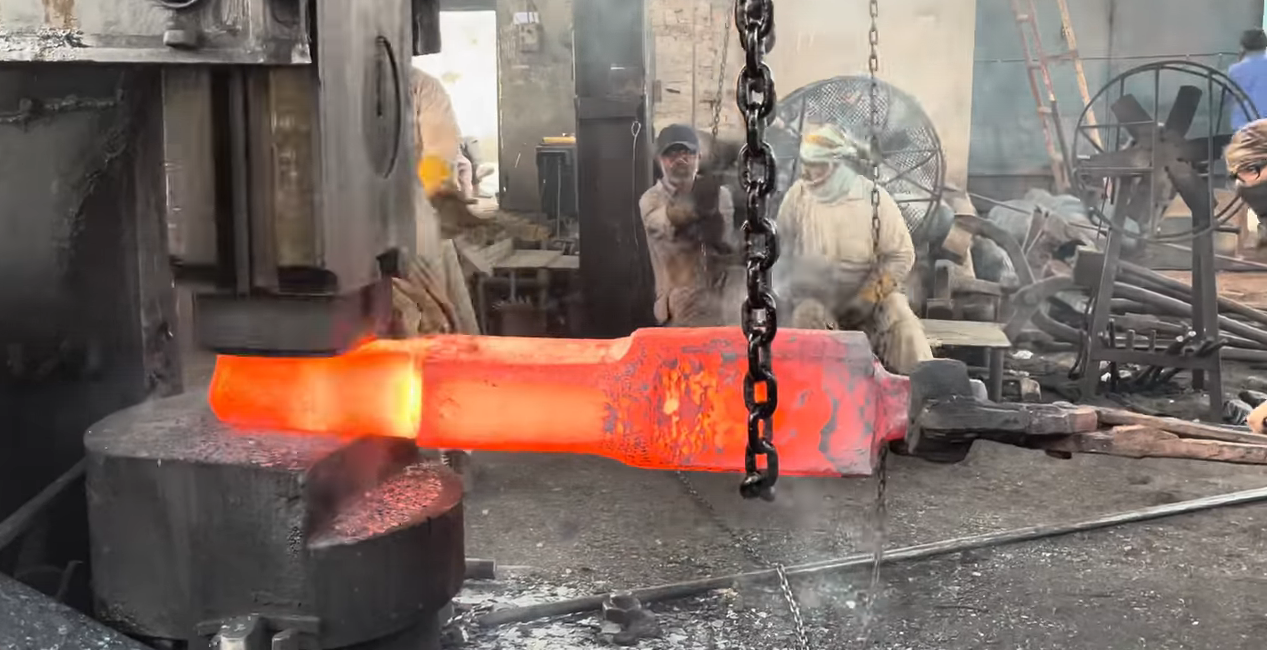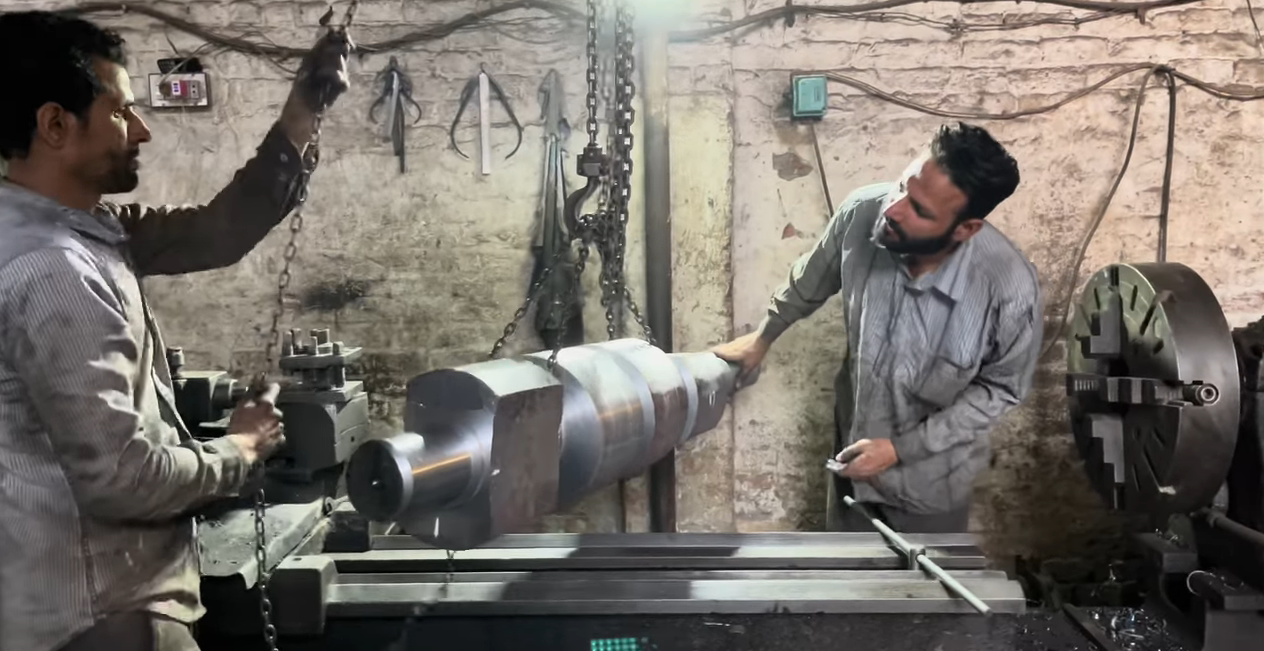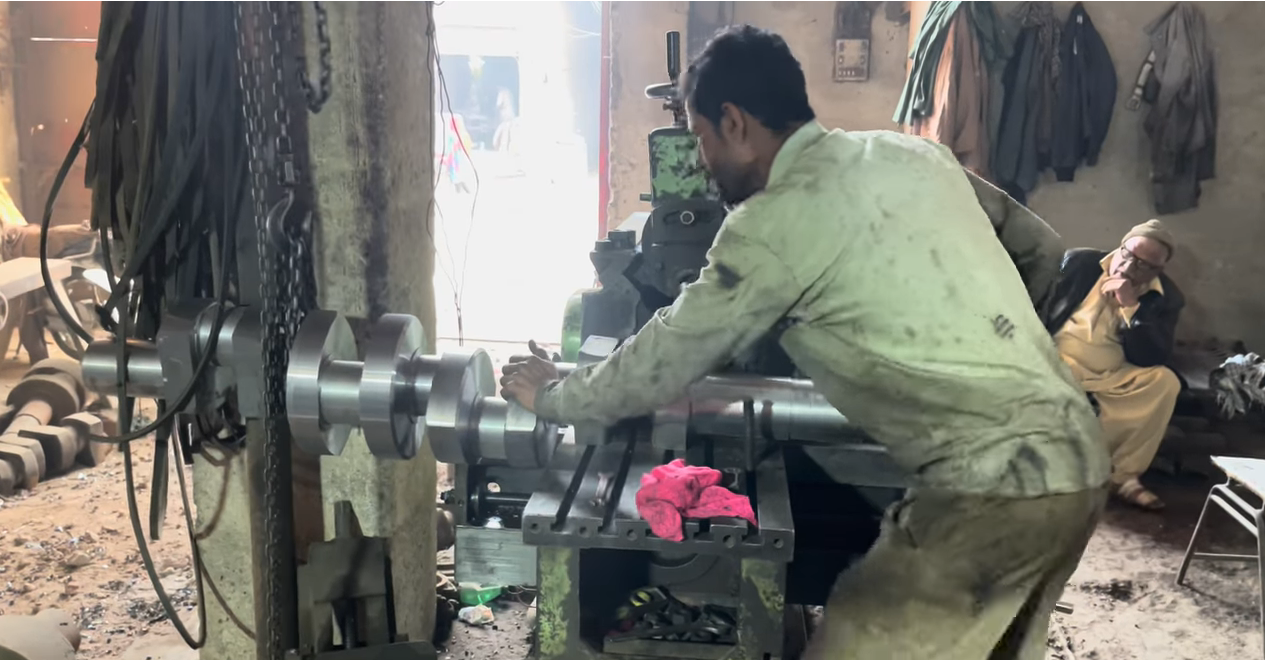Ammonia compressors are critical components in many industrial processes, such as refrigeration, chemical production, and energy generation. Ammonia compressors use a crankshaft to convert the rotary motion of the motor into the reciprocating motion of the pistons, which compress the ammonia gas.
Crankshafts are subjected to high stresses, vibrations, and temperatures, and can fail due to fatigue, corrosion, or other factors. When a crankshaft breaks, the compressor stops working, and the production or operation is disrupted. In this article, we will explore the fascinating story of repairing an ammonia compressor, whose crankshaft was broken in the middle, and how the engineers and technicians overcame the challenge by making a new crankshaft from a ship pipe.
 The story begins with a call from a chemical plant that had a critical ammonia compressor down. The compressor was a large reciprocating unit, with a capacity of 600 m3/h and a power of 250 kW. The plant had been running the compressor for over 10 years, and it had been serviced regularly. However, one day, the compressor suddenly stopped, and the inspection revealed that the crankshaft had broken in the middle.
The story begins with a call from a chemical plant that had a critical ammonia compressor down. The compressor was a large reciprocating unit, with a capacity of 600 m3/h and a power of 250 kW. The plant had been running the compressor for over 10 years, and it had been serviced regularly. However, one day, the compressor suddenly stopped, and the inspection revealed that the crankshaft had broken in the middle.
 The plant contacted several compressor manufacturers and repair shops, but none of them had a suitable replacement crankshaft in stock or could make one within the required timeframe. The plant was facing a dilemma: either shut down the whole production line and lose thousands of dollars per hour, or find a creative solution to fix the compressor.
The plant contacted several compressor manufacturers and repair shops, but none of them had a suitable replacement crankshaft in stock or could make one within the required timeframe. The plant was facing a dilemma: either shut down the whole production line and lose thousands of dollars per hour, or find a creative solution to fix the compressor.
 The engineers and technicians at the plant decided to take matters into their own hands and explore alternative options. They searched for local suppliers of steel pipes and tubes, and found a shipyard that had a large inventory of thick-walled steel pipes, used for shipbuilding. The engineers and technicians inspected the pipes and selected one that had the right diameter, length, and material composition, to serve as the basis for the new crankshaft.
The engineers and technicians at the plant decided to take matters into their own hands and explore alternative options. They searched for local suppliers of steel pipes and tubes, and found a shipyard that had a large inventory of thick-walled steel pipes, used for shipbuilding. The engineers and technicians inspected the pipes and selected one that had the right diameter, length, and material composition, to serve as the basis for the new crankshaft.
 The next step was to machine the pipe to the exact dimensions and specifications of the original crankshaft. The engineers and technicians used computer-aided design (CAD) software to create a 3D model of the crankshaft, which included the dimensions, tolerances, and features, such as the keyway and the oil passages. The engineers and technicians then programmed a computer numerical control (CNC) lathe to cut, drill, and shape the pipe, according to the 3D model. The machining process took several days, as the pipe had to be rotated and positioned accurately, and the cutting tools had to be changed frequently.
The next step was to machine the pipe to the exact dimensions and specifications of the original crankshaft. The engineers and technicians used computer-aided design (CAD) software to create a 3D model of the crankshaft, which included the dimensions, tolerances, and features, such as the keyway and the oil passages. The engineers and technicians then programmed a computer numerical control (CNC) lathe to cut, drill, and shape the pipe, according to the 3D model. The machining process took several days, as the pipe had to be rotated and positioned accurately, and the cutting tools had to be changed frequently.
 Once the new crankshaft was machined, it was inspected and tested thoroughly, to ensure that it met the same standards and requirements as the original crankshaft. The new crankshaft was checked for dimensional accuracy, surface finish, hardness, and other properties, using various instruments and techniques, such as micrometers, dial indicators, ultrasonic testers, and magnetic particle inspection. The new crankshaft was also assembled with the other components of the compressor, such as the pistons, the bearings, and the seals, and tested under various loads and conditions, to verify its performance and reliability.
Once the new crankshaft was machined, it was inspected and tested thoroughly, to ensure that it met the same standards and requirements as the original crankshaft. The new crankshaft was checked for dimensional accuracy, surface finish, hardness, and other properties, using various instruments and techniques, such as micrometers, dial indicators, ultrasonic testers, and magnetic particle inspection. The new crankshaft was also assembled with the other components of the compressor, such as the pistons, the bearings, and the seals, and tested under various loads and conditions, to verify its performance and reliability.
 In the end, the new crankshaft from the ship pipe proved to be a success. The compressor was repaired and put back into service, and the plant resumed its production without further delays or problems.
In the end, the new crankshaft from the ship pipe proved to be a success. The compressor was repaired and put back into service, and the plant resumed its production without further delays or problems.
The engineers and technicians who made the new crankshaft from the ship pipe received recognitionIn conclusion, the story of repairing an ammonia compressor by making a new crankshaft from a ship pipe is not only a testament to human resourcefulness and resilience, but also a reminder of the importance of innovation, collaboration, and problem-solving.
The engineers and technicians who faced the challenge of a broken crankshaft did not give up or rely on conventional solutions, but rather explored new options and techniques, and leveraged their expertise and creativity. By doing so, they not only fixed the compressor, but also demonstrated the power of engineering and manufacturing to transform limitations into opportunities.


